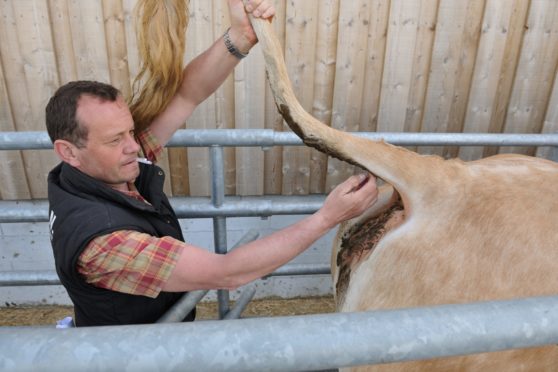The impact of Johne’s disease on affected cattle is too familiar with the control of the mycobacterium an ongoing challenge in a significant number of herds.
Beyond the clinical scour and weight loss, there are reductions in fertility, production efficiency and welfare – this means both producers and vets consider the control of Johne’s disease to be an industry priority.
In many ways CHECS health scheme standards are the cornerstone of cattle disease management.
The recent announcement by CHECS, formerly known as Cattle Health Certification Standards, that new Johne’s disease testing standards will be introduced is therefore an important milestone in the journey to control MAP across these islands.
It is a change designed not only to underpin a consistent approach across all the health scheme providers, but by strengthening risk standards, to safeguard Johne’s disease control progress across the national herd.
There has been a protracted debate regarding testing protocols.
The main pillar of the health scheme approach is screening for antibody through herd blood testing. A 2% false positive rate is a recognised feature of the blood test and therefore follow up testing of blood positive animals through screening faecal samples for evidence of the mycobacterium has been allowable.
However, different providers have implemented different levels of secondary follow up testing.
The divergence of the approach to follow up testing has created the potential, for herds with similar levels of infection, to be designated a different risk status, depending on the health scheme provider’s policy on secondary testing.
The changes to testing standards introduced by the CHECS board cut in at two levels.
First, the primacy of blood testing is confirmed, as it has the potential to identify infected animals before active disease is established.
Second, the use of faecal screening (which may deliver false negatives and only identifies animals where clinical disease has taken hold) as a secondary follow up test will only be allowable in low risk herds where there are 2% or fewer (or one animal) blood positives.
Special arrangements will remain in place where recent TB skin testing may have compromised the sensitivity of the blood test.
Although the change to testing procedures appear minor, the transition to a more rigid system will cause challenges for health scheme providers as they adjust to the new system and for some herd managers, the possible down-grading of herd risk-status may affect market access or value.
Transition is never an easy process and there are unfortunately costs, but clearly health scheme standards must evolve where standards may be compromised.
Cattle health status including Johne’s disease is going to become increasingly important, not only to underpin our efficiency and welfare aspirations on farm, but to fit with potential export demands (including the new EU Animal Health Law reporting standards) and to reduce greenhouse gas emissions as we move towards net-zero.
CHECS has, despite the pain associated with change, put disease control and the interests of the national herd first.
As new diagnostics, technology and understanding emerge, CHECS will have an important role in what can be difficult, but essential change management.
We as producers must support the evolution of our health schemes to meet the challenges of the future.
- Nigel Miller is a Berwickshire farmer and qualified vet. He is a former president of NFUS and the current chairman of Ruminant Health & Welfare.
